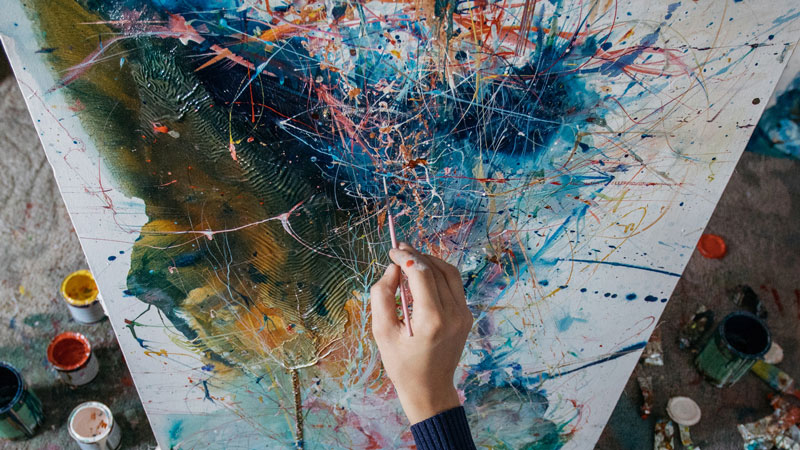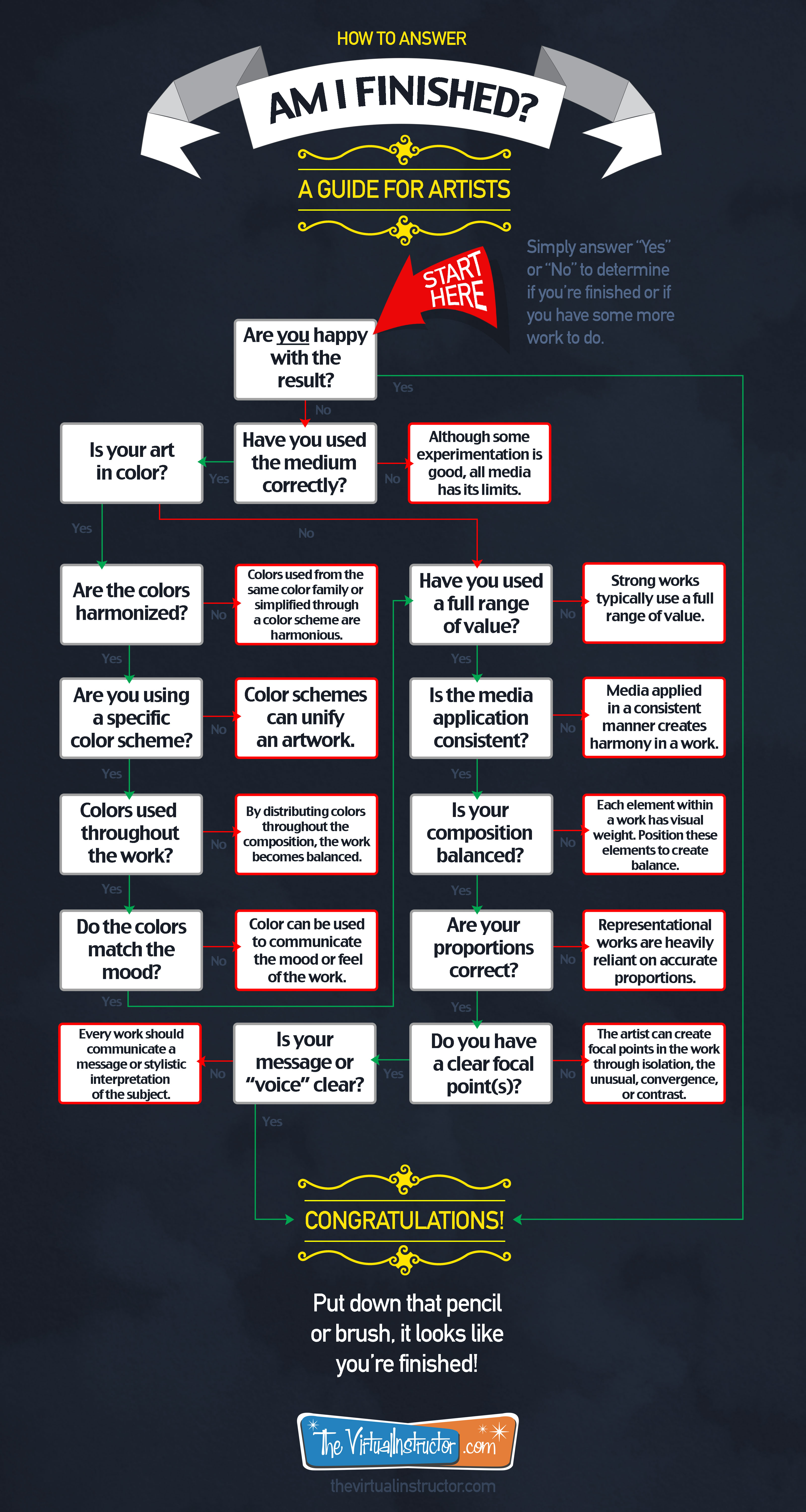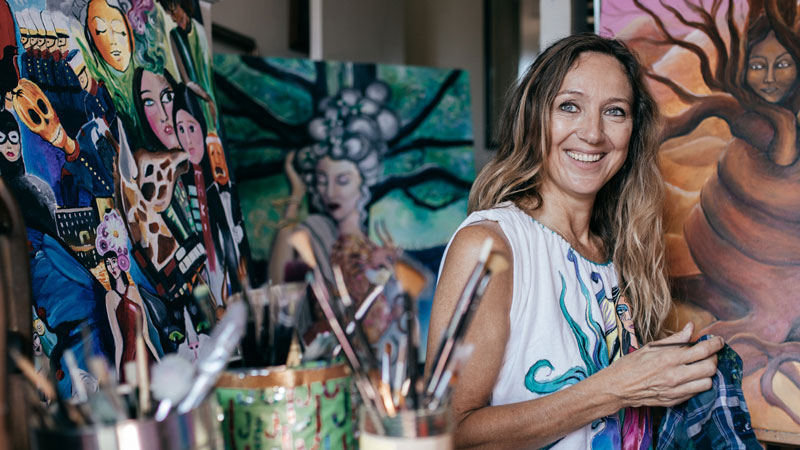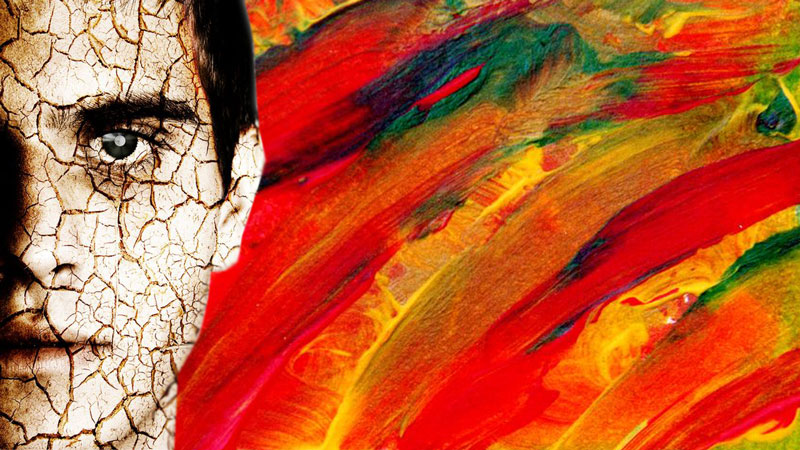
The very nature of creating is so personal that sometimes it’s hard to know when to stop.
The reality is that deciding when to stop “speaking” is tough for all of us. But knowing when and where to draw the line (no pun intended) is important to success.
We don’t want to overwork our art, but we also don’t want to stop before it has reached its full potential. We know that we need to stop at the peak, but we don’t know where we are on the mountain.
“You are the artist – the work is yours and yours alone.”
So how do you know when an artwork is finished? How do you know when it’s just the right time to stop and put the brush down?
Since creating is so personal, the answer to this question is ultimately personal as well. It is an answer that we must determine for ourselves, lest it be driven by anyone else’s opinions or dictations. You are the artist – the work is yours and yours alone.
With this being said, deciding if your work is finished is clearly difficult. Self doubt plays a role and if you let it – it will lead you down the path of overwork. But of course, other factors are at work as well.
Use this infographic to determine if your work is finished…
Is My Art Finished?
You must first face the reality that there will be imperfections in the finished work. You will see them and they will glare at you! No one sees the imperfections like the artist does and you must learn to accept them. (If you see no imperfections in your art, look closer – they’re there.)
With imperfections accepted, you then have to decide if you are happy with the result. If the answer is “yes”, then you are finished. It’s really that simple. The problem is that some artists don’t know how to determine if they are happy with their work or not. Or they fall in love with what they are creating and end up overworking it.
Let’s take a look at some factors to consider that may help you decide if you’re happy (finished) or if you have some more work to do…
If Your Work is in Color
There are specific considerations for works in color. Here are a few questions that you can ask yourself in analyzing the work…
- Are the colors harmonized?
- Is there a specific color scheme?
- Are colors distributed throughout the composition?
- Do the colors help convey the mood?
Color is powerful and should be optimized if it is used. Disjointed use of color can make an artwork look flat, unnatural, and unfinished.
But when used effectively, color can have the opposite effect – resulting in a work that is harmonious, natural, and finished – even with minimal use.
“Half of art is knowing when to stop.”
-Arthur William Radford
Try harmonizing the colors that you use by simplifying your palette or by implementing a specific color scheme. Distribute the colors throughout the work to balance its usage and include colors that will help communicate your message or mood.
Additional Considerations
Here are a few more questions to ask to yourself…
- Have you used a full range of value?
- Is the media application consistent?
- Are your proportions correct?
- Do you have a clear focal point or points?
- Is your message or “voice” clear?
Use of Value – A full range of value is important in most works. Value is the darkness or lightness of color and when used correctly, it can create the illusion of form, light and shadow, and texture. Some artists struggle to create a broad range of darks and lights leading to a work that looks unfinished. Use a full range of value in your work to give it a more natural and finished appearance.

Consistency in Application – Media can be applied using a variety of techniques and approaches and if a work has too many of them, it can look unfinished and unbalanced. Try to apply the medium using one or a handful of techniques in order to unify the work.
Accurate Proportions – For representational artworks, proportion must be considered. Inaccurate proportions in an artwork that is meant to be realistic will look unpolished and incomplete.
Clear Focal Points – The artist can and should control the viewer’s eye movement through the work. Focal points should be planned and clear in the work. Focal points can be developed in a work through convergence, contrast, the unusual, isolation, and placement near the center of the picture plane.
The Artist’s “Voice” and Message – Your artistic “voice” should be clear in every work that you create. While there doesn’t have to be a specific message per se, your marks still communicate your style and the finished work is your unique interpretation of the subject.
Summing It Up
As an artist, the answer to the question, “Am I finished?” can only be answered by you. Sure, everyone has their own opinions, but ultimately it is about your satisfaction with what you have created.
Personally, when my art has reached a point where all of the formal qualities have been satisfied, and my unique style (voice) is visible – then I am finished.
What do you think? When do you know when your work is finished?
If so, join over 36,000 others that receive our newsletter with new drawing and painting lessons. Plus, check out three of our course videos and ebooks for free.
Lesson Discussion
Comments are closed.







Excellent topic, Matt and one that has, in the past, given me a lot of grief!! Now, when I step back and say to myself “I don’t think there is anything more that needs to be done here” then, I’m done. Sign it, frame it and get on to the next one.
As for mistakes. . . . who but you knows it’s a mistake??? Perhaps you planned on having it that way. Don’t sweat the small stuff.
Hello. Thank you for your interesting post. To my personally it happens to me sometimes, I know that my work somewhat, missing perhaps beveled, perhaps obscure, but my question is does not find a way to finish. And if lingers long time I want to finish it but I’ve lost my muse and inspiration. Respectfully Mercedes.